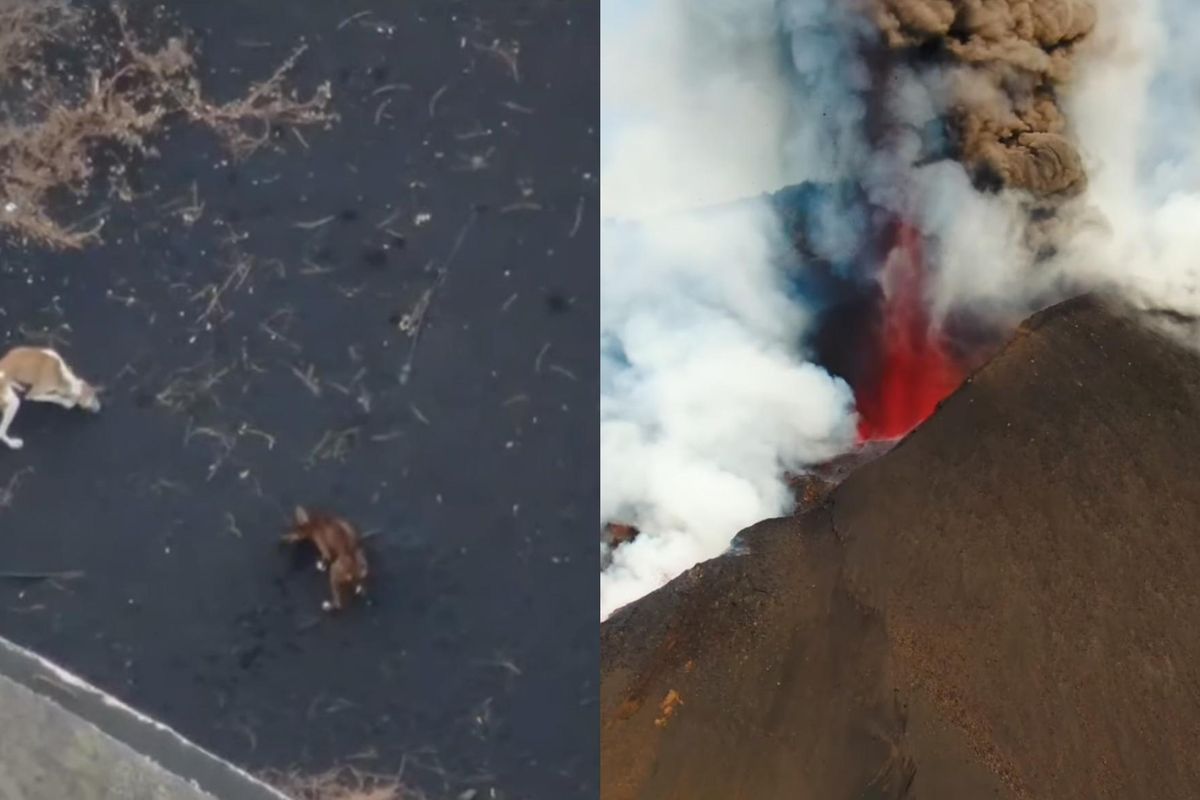Drones to Attempt Rescue of Starving Dogs Stranded by Volcano

For the past month, the Cumbre Vieja volcano on the Spanish island of La Palma has been erupting, necessitating the evacuation of 7,000 people as lava flows towards the sea and destroys everything in its path. Sadly, many pets have been left behind, trapped in walled-off yards that are now covered in ash without access to food or water. The reason that we know about these animals is because drones have been used to monitor the eruption, providing video (sometimes several times per day) of the situation.
In areas that are too dangerous to send humans, drones have been used to drop food and water to some of these animals, but that can only keep them alive for so long. Yesterday, a drone company called Aerocamaras received permission to attempt a rescue, using a large drone equipped with a net to, they hope, airlift a group of starving dogs to safety.
This video taken by a drone just over a week ago shows the dogs on La Palma:
What the previous video doesn't show is a wider view of the eruption. Here's some incredible drone footage with an alarmingly close look at the lava, along with a view back through the town of Todoque, or what's left of it:
Drone companies have been doing their best to get food and water to the stranded animals. A company called TecnoFly has been using a DJI Matrice 600 with a hook system to carry buckets of food and water to very, very grateful dogs:
Drones are the best option here because the dogs are completely cut off by lava, and helicopters cannot fly in the area because of the risk of volcanic gas and ash. In Spain, it's illegal to transport live animals by drone, so special permits were necessary for Aerocamaras to even try this. The good news is that those permits have been granted, and Aerocamaras is currently testing the drone and net system at the launch site.
It looks like the drone that Aerocamaras will be using is a DJI Agras T20, which is designed for agricultural spraying. It's huge, as drones go, with a maximum takeoff weight of 47.5 kg and a payload of 23kg. For the rescue, the drone will be carrying a net, and the idea is that if they can lower the net flat to the ground as the drone hovers above and convince one of the dogs to walk across, they could then fly the drone upwards, closing the net around the dog, and fly it to safety.
 Photo: Leales.org
Photo: Leales.org
The closest that Aerocamaras can get to the drones is 450 meters away (there's flowing lava in between the dogs and safety), which will give the drone about four minutes of hover time during which a single dog has to somehow be lured into the net. It should help that the dogs are already familiar with drones and have been associating them with food, but the drone can't lift two dogs at once, so the key is to get them just interested enough to enable a rescue of one at a time. And if that doesn't work, it may be possible to give the dogs additional food and perhaps some kind of shelter, although from the sound of things, if the dogs aren't somehow rescued within the next few days they are unlikely to survive. If Aerocamaras' testing goes well, a rescue attempt could happen as soon as tomorrow.
This rescue has been coordinated by Leales.org, a Spanish animal association, which has also been doing their best to rescue cats and other animals. Aerocamaras is volunteering their services, but if you'd like to help with the veterinary costs of some of the animals being rescued on La Palma, Leales has a GoFundMe page here. For updates on the rescue, follow Aerocamaras and Leales on Twitter-and we're hoping to be able to post an update on Friday, if not before.